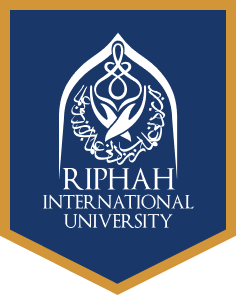As we navigate the complexities of an ever-evolving job market, understanding the future of job recruitment is paramount for both employers and job seekers. Recent trends indicate a significant shift driven by technology, changing workforce demographics, and evolving expectations of candidates. Companies like OKVIP are at the forefront of these changes, leveraging innovative strategies and tools to redefine how organizations connect with potential employees. This article delves into various elements shaping this landscape, offering insights that highlight the essential aspects of modern job recruitment.
The Role of Technology in Recruitment

The recruitment process has undergone a technological revolution that has transformed traditional methods into efficient, data-driven practices. As companies increasingly rely on tech solutions, it prompts a reevaluation of what effective recruitment looks like today.
Artificial Intelligence in Candidate Sourcing
Artificial Intelligence (AI) has become an indispensable tool in recruitment, streamlining candidate sourcing and filtering processes. Recruiters can now leverage AI algorithms to sift through thousands of resumes quickly, identifying the most fitting candidates based on specific criteria.
This automated approach not only saves time but also reduces biases that may affect human decision-making. For instance, AI tools can analyze language patterns and qualifications without being influenced by a candidate’s background, promoting diversity and inclusion within hiring practices.
Furthermore, AI-driven chatbots have enhanced candidate experience by providing immediate responses to inquiries, keeping applicants engaged and informed throughout the recruitment journey.
Data Analytics for Informed Decision-Making
Data analytics plays a crucial role in refining recruitment strategies. By collecting and analyzing data, recruiters can gain valuable insights into market trends, candidate behavior, and the effectiveness of various channels used for sourcing talent.
Organizations like OKVIP utilize data to track which platforms yield the highest quality candidates and optimize their outreach efforts accordingly. This strategic use of data allows recruiters to make informed decisions about where to allocate resources and how to tailor their messaging for better engagement.
Moreover, predictive analytics can help identify the skill sets likely to be in demand in the future, enabling businesses to proactively develop and attract the right talent.
Virtual Reality and Immersive Experiences
Virtual reality (VR) is beginning to find its place within recruitment, providing immersive experiences that can showcase company culture or simulate job tasks. Through VR, candidates can get a firsthand look at what working in a specific environment entails, aiding them in making informed decisions about applying for positions.
This trend not only enhances the candidate’s experience but also helps employers stand out in a competitive market. By using VR to engage potential hires, companies demonstrate innovation and a commitment to creating a unique recruitment journey.
Evolving Candidate Expectations

With the rise of new generations in the workforce, candidate expectations regarding job recruitment have shifted considerably. Today’s job seekers prioritize factors beyond salary, seeking roles that align with their values and aspirations.
Work-Life Balance and Remote Opportunities
The COVID-19 pandemic has catalyzed a reevaluation of work-life balance, leading many candidates to seek positions that offer flexible arrangements. The ability to work remotely is no longer a perk; it’s often a prerequisite.
Businesses must adapt their hiring strategies to reflect this shift. Organizations like OKVIP have responded by incorporating remote work options into their job postings and emphasizing flexibility during the interview process. This approach not only attracts a broader pool of candidates but also signals a progressive organizational culture.
Additionally, companies focusing on employee well-being and mental health are becoming increasingly appealing to potential hires. Emphasizing these aspects in recruitment efforts can set employers apart in a crowded job market.
Purpose-Driven Employment
Today’s candidates are more likely to favor organizations that align with their personal values. Candidates actively seek employers who demonstrate social responsibility and contribute positively to the community.
Recruiters should highlight a company’s mission, vision, and values throughout the recruitment process. By showcasing initiatives such as sustainability efforts, charitable programs, or diverse hiring practices, employers can attract like-minded individuals who resonate with their corporate ethos.
Understanding the importance of purpose-driven employment enables organizations to adjust their branding and messaging strategies to appeal to socially conscious candidates.
Enhanced Communication and Transparency
The value of clear communication cannot be overstated in today’s recruitment landscape. Candidates appreciate transparency regarding the recruitment process, including timelines, expectations, and feedback.
Employers can enhance candidate experience by maintaining open lines of communication, providing regular updates throughout the process, and being upfront about potential challenges or obstacles. This commitment to transparency fosters trust, which can be pivotal in securing top talent.
By utilizing platforms such as OKVIP, organizations can facilitate better communication and ensure candidates are well-informed, ultimately leading to higher satisfaction rates throughout the recruitment journey.
Diversity and Inclusion as a Priority

Diversity and inclusion (D&I) have become foundational pillars for successful recruitment strategies. Employers recognize the benefits of cultivating a diverse workforce, including increased creativity, improved problem-solving, and enhanced company reputation.
Implementing Inclusive Hiring Practices
To foster diversity in hiring, companies are reexamining their recruitment practices and implementing inclusive strategies. This includes revising job descriptions to eliminate biased language, ensuring that all potential candidates feel welcomed to apply regardless of their backgrounds.
Tools provided by platforms like OKVIP enable recruiters to assess their existing practices critically and implement necessary changes. Regular training on unconscious bias can further equip hiring managers to approach recruitment with an inclusive mindset.
Moreover, partnerships with organizations focused on underrepresented groups can help broaden candidate reach and create a more diverse applicant pool.
Building a Culture of Belonging
It’s essential for employers to go beyond just hiring diverse candidates; they must prioritize creating an inclusive workplace culture where everyone feels a sense of belonging. This involves fostering an environment where diverse perspectives are valued, and all employees can thrive.
Employers can cultivate such a culture through mentorship programs, employee resource groups, and opportunities for continuous learning. Highlighting these initiatives in recruitment campaigns serves to attract candidates who value inclusivity.
The impact of a welcoming culture extends beyond recruitment; it can lead to higher retention rates and increased employee engagement, driving overall performance.
Leveraging Technology for D&I Initiatives
Technology can play a transformative role in advancing diversity and inclusion within recruitment. Many companies are adopting software that focuses on blind resume screening, reducing bias in the initial selection process.
Platforms like OKVIP offer features that allow recruiters to evaluate candidates based solely on skills and qualifications, thus minimizing the influence of demographic factors. This innovative approach is a significant step toward achieving equitable hiring practices.
Additionally, organizations can utilize data analytics to monitor diversity metrics and identify areas for improvement. Regular assessments enable recruiters to hold themselves accountable and continuously evolve their strategies to promote a diverse and inclusive workplace.
FAQs
What are the main trends shaping the future of job recruitment?
The future of job recruitment is mainly influenced by technology advancements, evolving candidate expectations, a focus on diversity and inclusion, and changing workplace dynamics due to remote opportunities. Companies are increasingly leveraging AI, data analytics, and engaging virtual experiences to enhance their recruitment strategies.
How is artificial intelligence impacting the recruitment process?
Artificial Intelligence streamlines the recruitment process by automating candidate sourcing, filtering, and communication. AI algorithms can quickly analyze resumes and identify qualified candidates while reducing biases in decision-making, significantly enhancing efficiency and fairness in hiring.
Why is employer branding important in attracting candidates?
Employer branding plays a crucial role in attracting candidates by showcasing a company’s values, culture, and mission. A strong employer brand can differentiate organizations in a competitive job market, helping to attract like-minded individuals who resonate with the company’s ethos.
How can organizations improve their diversity and inclusion efforts in recruitment?
Organizations can enhance their diversity and inclusion efforts by revising job descriptions to eliminate biased language, implementing blind resume screening technologies, and establishing partnerships with organizations focused on underrepresented groups. Continuous training on unconscious bias for hiring managers is also essential.
What role does transparency play in the recruitment process?
Transparency in the recruitment process builds trust between candidates and employers. Clear communication regarding timelines, expectations, and feedback fosters a positive candidate experience and increases the likelihood of attracting top talent.
Conclusion
The future of job recruitment is undoubtedly dynamic and multifaceted, shaped by technology, shifting candidate priorities, and an increasing emphasis on diversity and inclusion. Companies like OKVIP are setting the standard by embracing these trends and harnessing innovative strategies to attract and retain top talent.
As employers adapt to these changes, refining their recruitment approaches will be crucial for success. By prioritizing technology, enhancing candidate experiences, and fostering inclusive cultures, organizations can position themselves as leaders in the evolving job market. As we move forward, it will be vital to remain agile and responsive to the needs of both candidates and employers, ensuring a thriving workforce that reflects the diversity and dynamism of our society.
